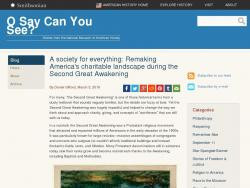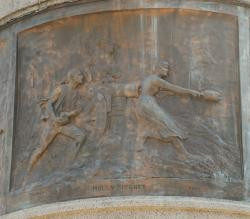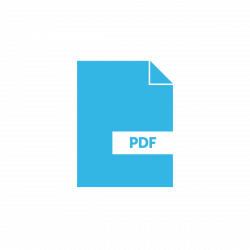Kate Harris
Social Studies teacher
Pittsburgh CAPA
Middle School (13 to 15 years old), High School (16 to 18 years old)
Teacher/Educator
Language Arts And English, Civics, Literature, Cultures, Economics, Social Studies, Geography, Writing, US History, Arts, Other
I'm a history-lover, art fan, and bookworm. I taught high school history (U.S. History and World Religions) for ten years in North Carolina, teach currently in Pittsburgh, PA, and am working to help teachers make the most of this new resource!
Kate Harris's collections
What stories do artifacts tell?
<p>This student activity asks students to develop a story about a mystery artifact, editing and adjusting their narrative as they discover more information. Students will develop historical thinking skills while learning more about the experience of living in a specific time and place.</p>
<p>tags: Japan, internment, incarceration, Manzanar, World War II, World War 2, WW2, Executive Order 9066, Roosevelt, FDR</p>
<p><em>#historicalthinking</em></p><p><br /></p>
 Kate Harris
Kate Harris
12
What were the causes of U.S. imperialism?
<p>This collection examines the causes of U.S. imperialism at the turn of the century through the lens of two political cartoons. Students will investigate both cartoons and develop a definition of imperialism based on what they find. </p>
 Kate Harris
Kate Harris
4
Who discovered America?
The question "Who discovered America?" invites a lot of discussion, now that many of us recognize that the simple answer of "Columbus" is not entirely accurate. This collection includes resources to help support student investigation into the answers of these questions:
-What does it mean to "discover" a place?
-How did the first peoples arrive in the Americas?
-What claims to the Vikings and the Chinese have to the discovery of America?
-Should Columbus be celebrated as a hero, villain, or something in between?
There are discussion questions and additional links throughout the collection. Teachers and students are invited to explore the many websites included to further their research.
 Kate Harris
Kate Harris
18
Women and Gender During the Revolutionary War
<p>The Revolutionary War was an interesting time for women, women served in a lot of conventional ways such as cooks, maids, and nurses; however, women also served in a lot of unconventional ways such as spies and even soldiers. Race was also a factor in when accounting for the roles that women played. The following items are a small symbolic representation of the many various contributions that women made during the Revolutionary War.</p>
<p>Some additional source material:</p>
<p><a href="http://www.history.org/History/teaching/enewsletter/volume7/nov08/women_revarmy.cfm">http://www.history.org/History...</a></p>
<p><a href="http://score.rims.k12.ca.us/score_lessons/women_american_revolution/">http://score.rims.k12.ca.us/sc...</a><br></p>
<p><a href="http://www.historycentral.com/Revolt/Americans/Women.html">http://www.historycentral.com/...</a><br></p>
<p><a href="https://allthingsliberty.com/2013/10/10-amazing-women-revolutionary-war/">https://allthingsliberty.com/2...</a><br></p>
<p><a href="https://www.revolutionary-war.net/revolutionary-war-women.html">https://www.revolutionary-war....</a><br></p>
 Kate Harris
Kate Harris
12
Women in World War II
This collection teaches students about the changing role of women during World War II: their role in the workplace, increasing presence in the military, and participation in voluntary organizations that supported the war. Students should think about how these activities reinforced traditional notions of gender divisions while they also allowed women to experience new activities.
 Kate Harris
Kate Harris
23
Women's Suffrage Postcards
This is a topical collection of women's suffrage postcards that could be used to supplement lessons on the women's rights movement and/or gender equality. They are also excellent practice in artifact analysis.
Some questions to consider:
-What do these postcards tell us about the arguments for and against women's suffrage?
-Why are so many of the postcards focused on geography?
-Who do you think each postcard is meant to appeal to?
 Kate Harris
Kate Harris
21
WWI Propaganda
<p><u></u>This student activity includes a variety of types of propaganda related to World War I. The United States government took great action when it came to World War I—they helped organize workers, recruit military members, and regulate the economy so that American could have a successful impact on the war. The Committee of Public Information formed by George Creel and other propaganda-producers used advertising techniques from businesses to make appeals to the average citizen and encourage them to make a difference. This assignment will ask you to connect each piece of propaganda to one of four major goals of the U.S. government during the war and to analyze a few specific pieces for author, audience, purpose, and even the medium/form. </p><p>Essential questions include:</p><ul><li>What are the four main goals of the government during World War I?</li><li>Why and how did propaganda creators target specific audiences with their messages?</li><li>What are the effects of changing the medium or form of propaganda on how it might be received?</li></ul><p>Tags: World War I, WWI, selective service, draft, liberty bonds, propaganda, music, Uncle Sam, persuasive writing, cause effect</p>
 Kate Harris
Kate Harris
14






